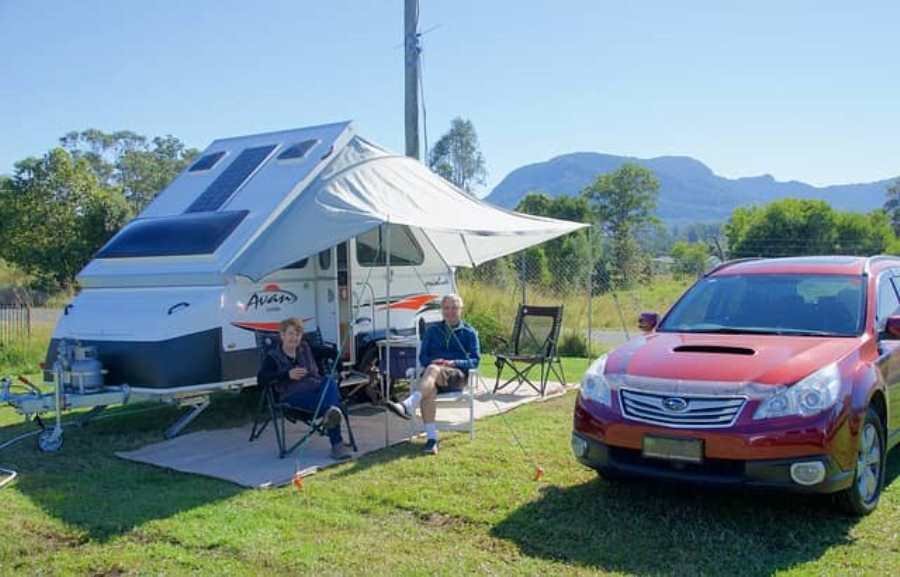The modern tourist has long been not the enthusiast with enough guitar and a bowler hat tied to his backpack on hikes. Now the traveler is given a bunch of electronic gadgets that will help him navigate the terrain, capture bright moments and at the same time allow him to always stay in touch with the city.
You cannot do without a camera, smartphone, GPS navigator, Action camera, and many other devices. They all need periodic charging, so when going on a hike, you need to assess their capabilities and take care of their energy supply.
The best way is to take with you only the necessary and proven devices. Do not carry too many gadgets with you: because of them, the weight of the luggage that you will have to carry on your shoulders increases significantly.

Counting Watts and Ampere-hours
Before you conquer new routes, make a clear plan for the power supply of portable devices. It will depend on several key factors:
- The number of electronic gadgets, their total “appetite”;
- The planned time spent away from the benefits of civilization and the electrical outlet;
- The type and capacity of batteries that provide energy for each electronic assistant;
- The intensity of use of electronic devices.
It is necessary to meticulously and carefully calculate the energy “appetite” of each consumer who finds himself with a tourist on the way. Objectively assess how often the gadget will require recharging.
A push-button phone will hold a charge for more than a week, and a modern smartphone will declare “hunger” already on the second or third day.
Depending on the results obtained, we select the necessary accessories for the autonomous power supply. However, their type and the right amount largely depend on the chosen option of active recreation.
Traveling by Car

Perhaps, auto tourists are in the most advantageous position. After all, the car has both a powerful battery and a generator that generates electrical energy. It remains only to choose accessories suitable for charging specific models of mobile devices.
The most popular are car chargers. When choosing a car charger, you should consider the plug type for charging gadgets, the output power, and the maximum output current.
Pay special attention to power! It should be higher than the power consumption of the gadget, or at least equal to it. Otherwise, the opposite effect will occur — charging will discharge the device’s battery.
Another device that is worth taking with you on a trip by car is a car inverter. It will make you feel comfortable even in the wilderness: connecting a laptop to a standard 220 V outlet or organizing parking lot lighting with LED lamps is quite a feasible task for an inverter.
The main thing is not to be carried away and to prevent the discharge of the car battery to “zero.”
Short Trips to Nature
If the trip to nature is for only a few days, portable batteries (power banks) will be the best option for power reserve and weight ratio. A couple of such devices of sufficient capacity will last for several cycles of full-fledged charging of mobile gadgets.
The main thing is to choose the suitable capacity of the portable station, and do not forget to charge it before setting off.
Combined devices are efficient, for example, flashlights with a USB connector for charging gadgets.
In addition, among the offers of portable batteries, there is often moisture-, dust-proof and shock-resistant models best suited for lovers of extreme recreation.
Autonomous Hiking

Going on a strenuous hike that will take more than a week, in addition to portable batteries, take a solar panel with you.
The solar panel works exceptionally well in conjunction with a portable battery. You can charge the power bank directly during transitions by placing the solar panel on the backpack’s surface and connecting the battery to it.
The current strength of the charge strongly depends on the illumination, and it is not always possible to achieve ideal conditions (absence of shadows, clear sky, bright sun, etc.). In addition, you can charge not every smartphone with low currents, but a portable battery will “absorb” energy to the last drop.
To charge the AA and AAA form factor batteries used to power photographic equipment, having a charger powered by a USB connector in your arsenal would be helpful. If necessary, we connect it to the solar panel or pump energy into it from the power bank. With this approach, memories will remain not only in the head but also on digital media.
Alternative Sources
Thanks to trends in environmental friendliness and a thrifty attitude to nature, alternative energy sources are gaining more and more popularity.
Wind and hydro generators are rightfully considered bright representatives of this direction. Obtaining energy in them occurs by converting wind or water energy into electrical energy.
A separate direction of alternative sources is gadgets based on the thermoelectric effect. The strength of heat is quite enough to charge devices.
Therefore, drinking tea in nature or cooking a hearty dinner while charging your devices are compatible tasks.
The main disadvantage of alternative energy sources is their low efficiency and insufficient efficiency indicators, preventing widespread use.
What to Consider
When it comes to choosing the best portable power supply, it depends on what you need. In addition, just before buying, it is helpful to have a guide to know what to look for and factors to consider.
Size and Weight
One of the most important things to keep in mind is size and weight. If you are going to use it outdoors and always travel, you need a lightweight and portable device.
Ease of Use and Operation
The next thing to check is the ease of use and operation. Most portable power supplies can recharge any device without problems. But keep in mind that each portable power supply varies depending on the technical characteristics, so not all devices can be simple and easy to use.
Capacity
Some may need a portable power source for more than just charging their small devices. For example, if you need it to start your car, you need to have a device with more power.
Ports and Plugs
Examine the ports and connectors to find out which devices you can charge. Some devices allow you to capture only smartphones, tablets, etc. At the same time, other portable power supplies will enable you to charge appliances and other electrical devices.
Additional Functions
What about the security features? As much as you want to save on price, you won’t want to compromise your security, so this will help you find a unit that has a security system. Some devices have other valuable functions, such as LED lights, battery charge indicators, fast charging, etc.
Conclusion
Once upon a time, when the only way was to use strong, expensive, and heavy generators, now a portable power source allows you to charge any device. Choose the best portable power supply, and you will never have to worry about running short on electricity. There are some reliable reviews online that will help you pick the best versatile portable station for your needs.
A power outage can occur anytime and anywhere. You will never know when this will happen if you have a portable power supply. To avoid causing a problem when this happens, you may well prepare for everything.





